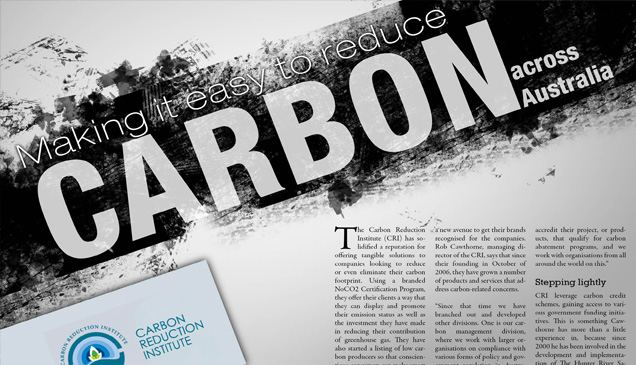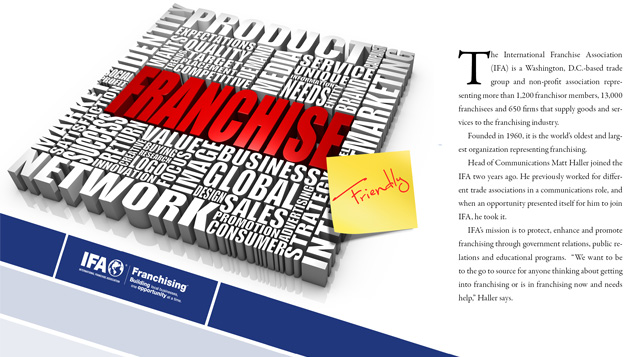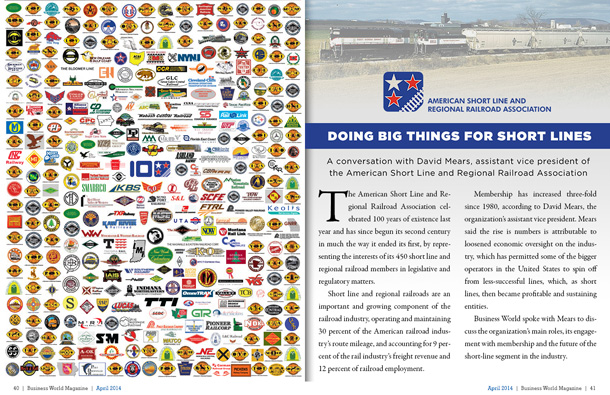
Making it easy to reduce carbon emissions across Australia
The Carbon Reduction Institute (CRI) has solidified a reputation for offering tangible solutions to companies looking to reduce or even eliminate their carbon footprint. Using a branded NoCO2 Certification Program, they offer their clients a way that they can display and promote their emission status as well as the investment they have made in reducing their contribution of greenhouse gas. They have also started a listing of low carbon producers so that conscientious consumers can make smart choices when selecting brands or services. This provides peace of mind for the customers, and a new avenue to get their brands recognised for the companies. Rob Cawthorne, managing director of the CRI, says that since their founding in October of 2006, they have grown a number of products and services that address carbon-related concerns.
“Since that time we have branched out and developed other divisions. One is our carbon management division, where we work with larger organisations on compliance with various forms of policy and government regulation in Australia,” says Cawthorne. “Another is our project commercialisation division, which helps companies accredit their project, or products, that qualify for carbon abatement programs, and we work with organisations from all around the world on this.”
Stepping lightly
CRI leverage carbon credit schemes, gaining access to various government funding initiatives. This is something Cawthorne has more than a little experience in, because since 2000 he has been involved in the development and implementation of The Hunter River Salinity Trading Scheme, seen as Australia’s first emissions trading scheme. “We then have our energy efficiency division, which has a series of products that help people reduce their energy consumption, because that is, obviously, where some of the major greenhouse gas outputs occur,” says Cawthorne. Their Voluntary Certification Program helps companies manage and institute policies that work towards the end of reducing or negating their carbon footprint.
Cawthorne says that they do have some influence with policy makers, influence that is almost disproportionate to their size. “We have a lot of lobbying power at different levels of government, and I don’t want to overstate it – it is a limited influence – but we are considered a leader in the carbon reduction effort,” he says. The problem, according to Cawthorne, is that many of the bigger contributors to carbon emissions are also very strong industries with a much larger capacity to lobby the government.
Responsibility is not just the corporation’s job
Cawthorne does not think that companies are completely at fault, and this is a message that many people do not want to hear. “Sometimes it’s the consumers themselves that drive the way the companies behave, and how they structure their operations. It is not necessarily the business that is 100 per cent responsible there.” Education and messaging are important to Cawthorne. He also thinks that branded logos (which are acquired by companies that go through their certification process) force consumers to think about what they are buying. These assessments cover every part of the production process, from supply chain to distribution. When CRI looks at this, they are able to find solutions that will allow their clients to improve their methods, reduce energy and emissions, and highlight opportunities to select suppliers that adhere to their philosophies. Their team is made up of specialists in engineering, accounting, marketing, and environmental experts who can offer effective paths to carbon reduction or neutrality.
Building the list
“We hope to meet and increase consumer’s demand for this market, and that will in turn encourage other businesses to get on-board.” With over 160 businesses that are certified, Cawthorne says that consumers already have a lot of choices when it comes to services and products. With four levels of certification, Cawthorne says that it is possible for almost any business to qualify for a rating level. Even if they do not, they are at least educated about their contribution to CO2 in the atmosphere, and their wish for assessment indicates their interest in bettering their methods. “I am expecting to see some significant growth in the number of companies we represent,” says Cawthorne.








